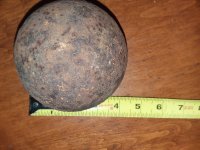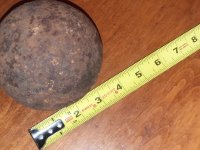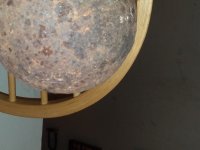Thinking this thing I found may be some tank or hydraulic system float... or a cannonball!  weighs a couple of pounds, sloshing inside when shaken. Any thoughts? Thanks!
weighs a couple of pounds, sloshing inside when shaken. Any thoughts? Thanks!
 weighs a couple of pounds, sloshing inside when shaken. Any thoughts? Thanks!
weighs a couple of pounds, sloshing inside when shaken. Any thoughts? Thanks!Attachments
Upvote
2














